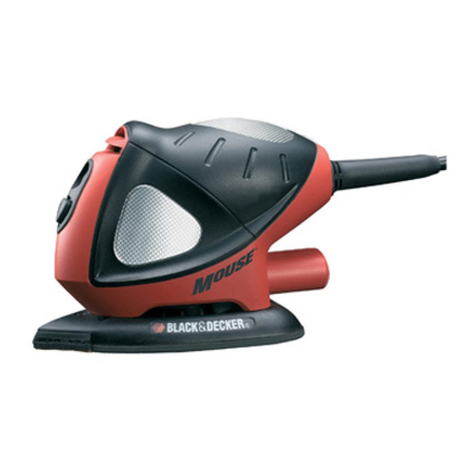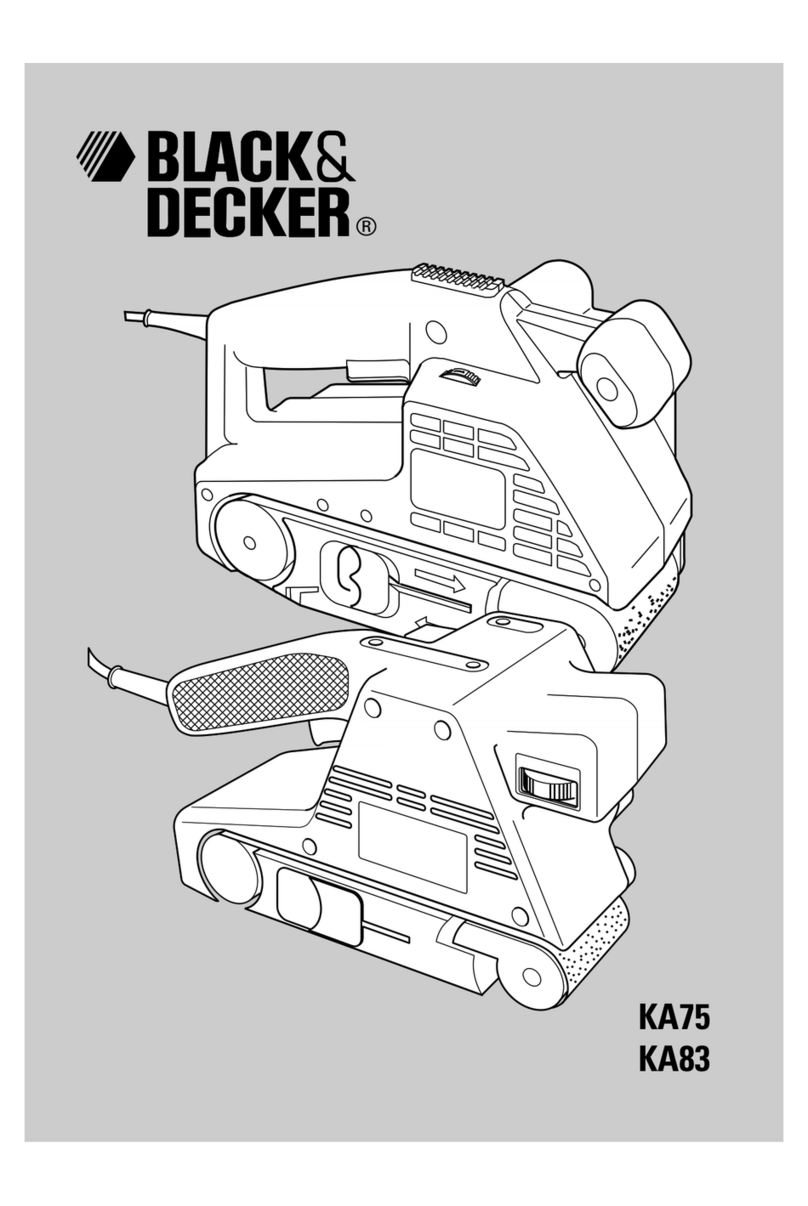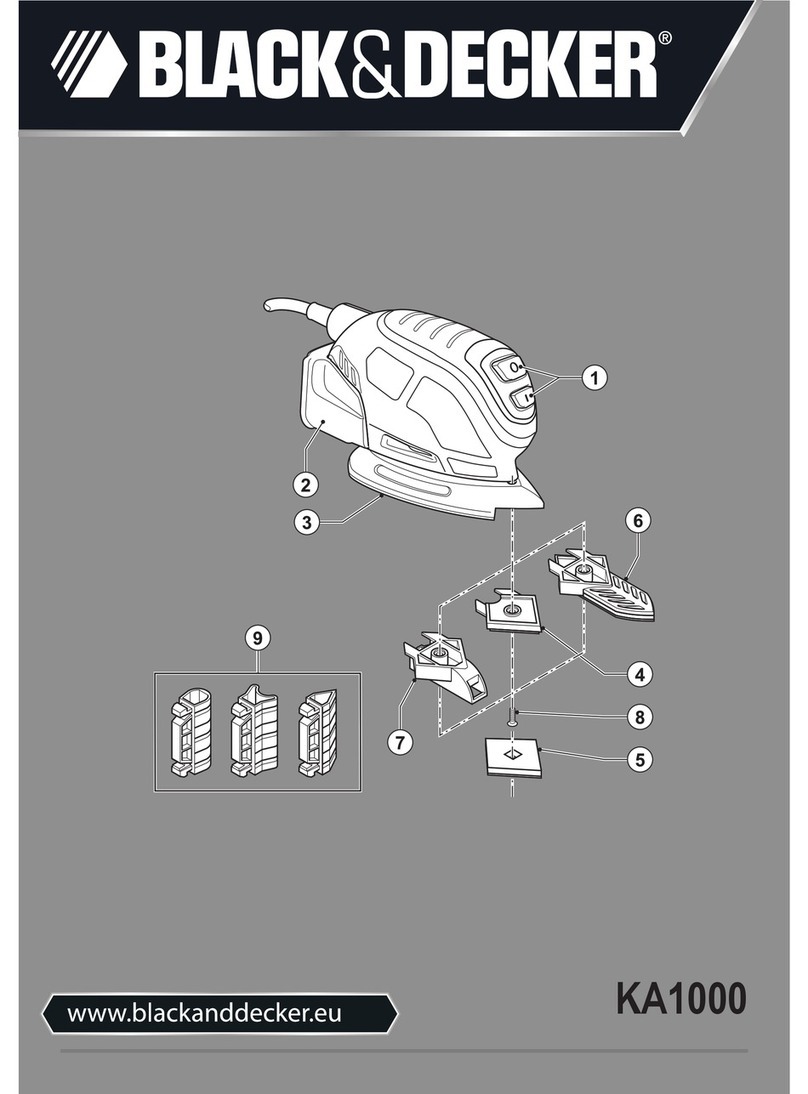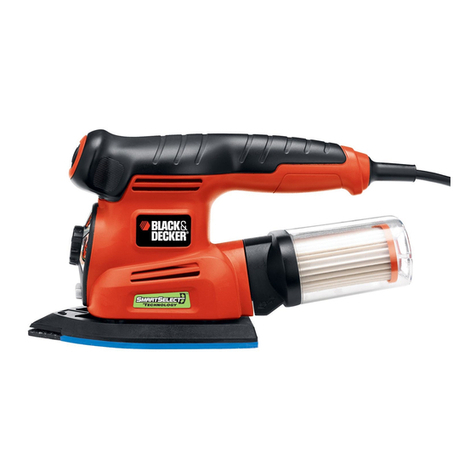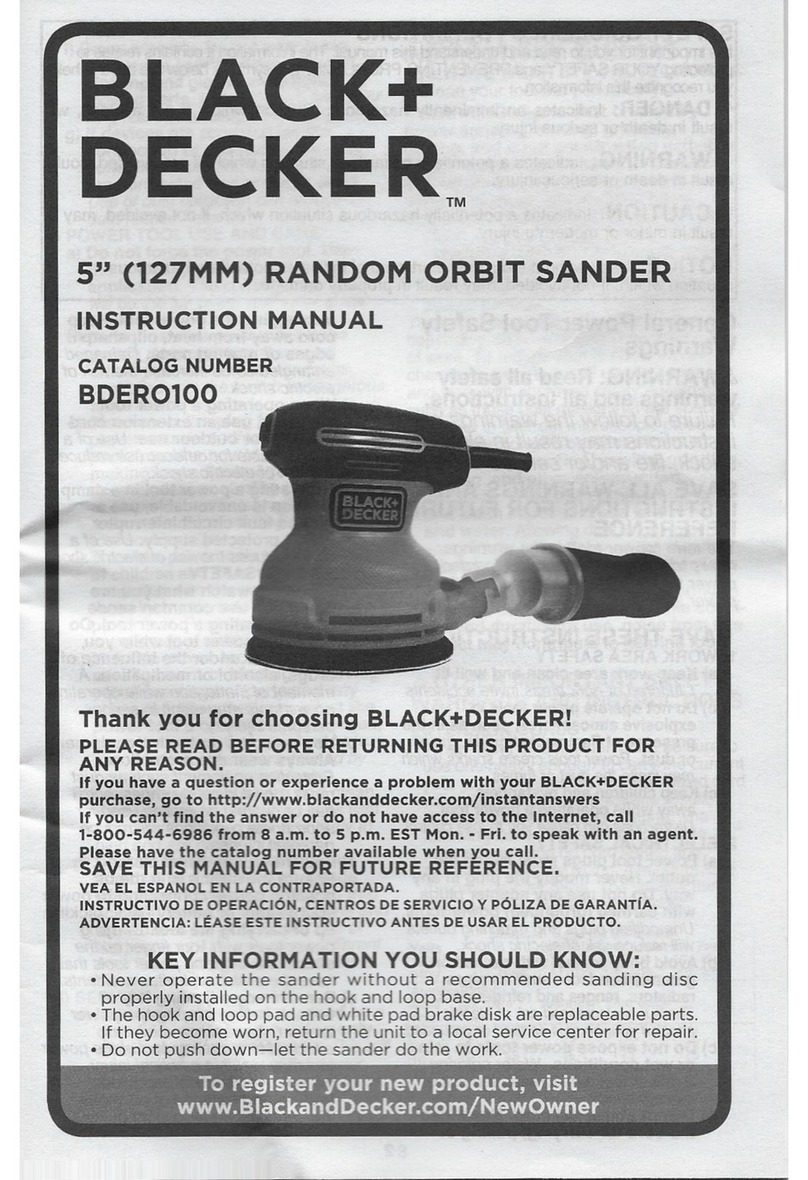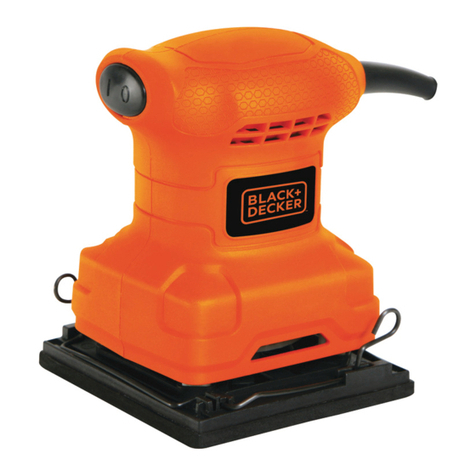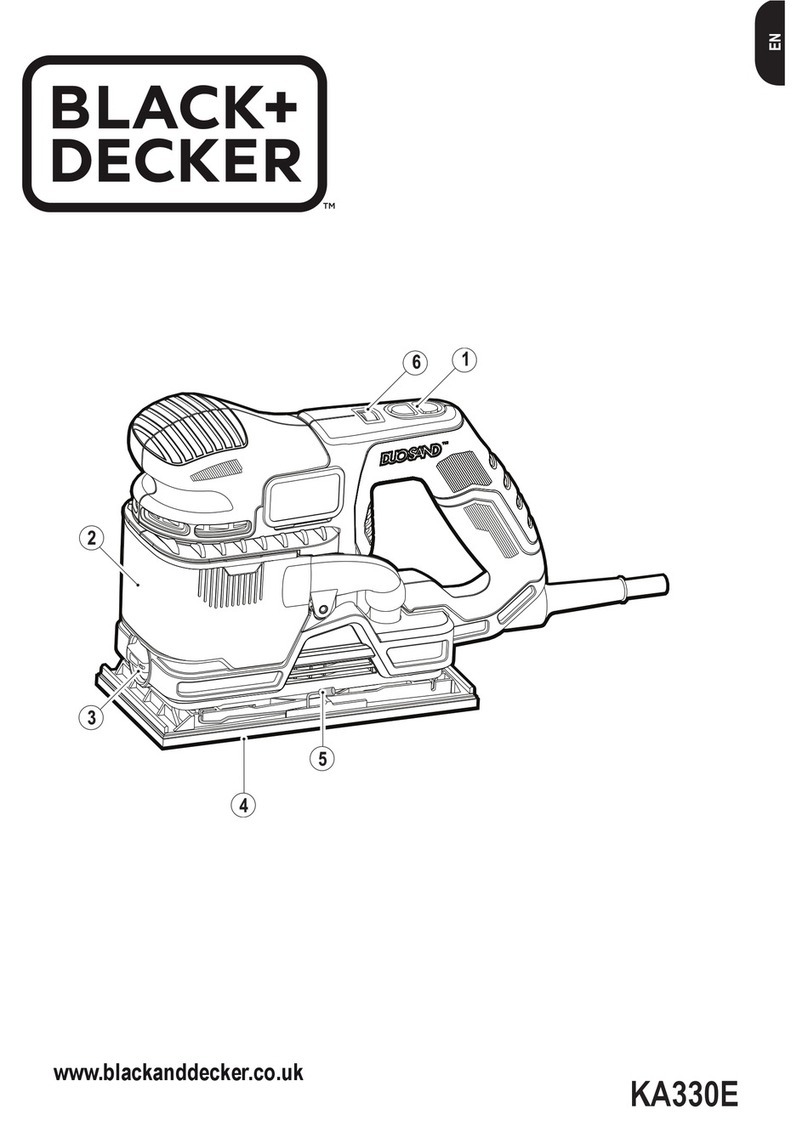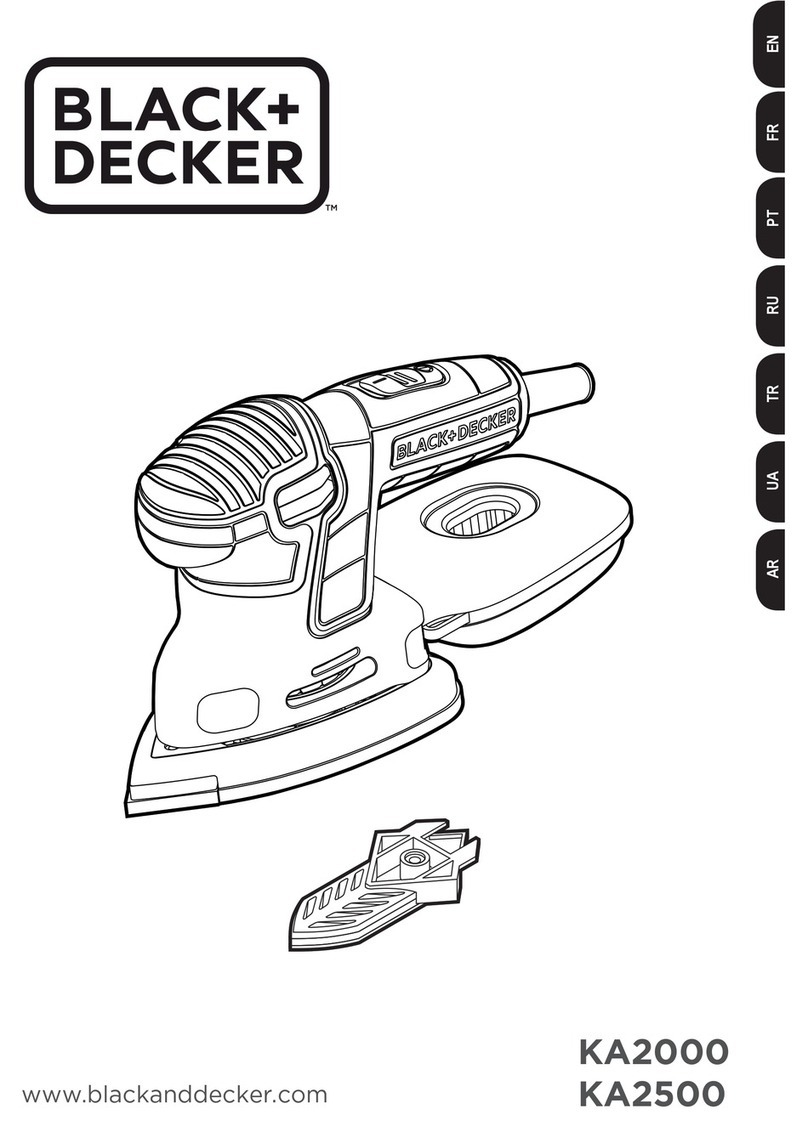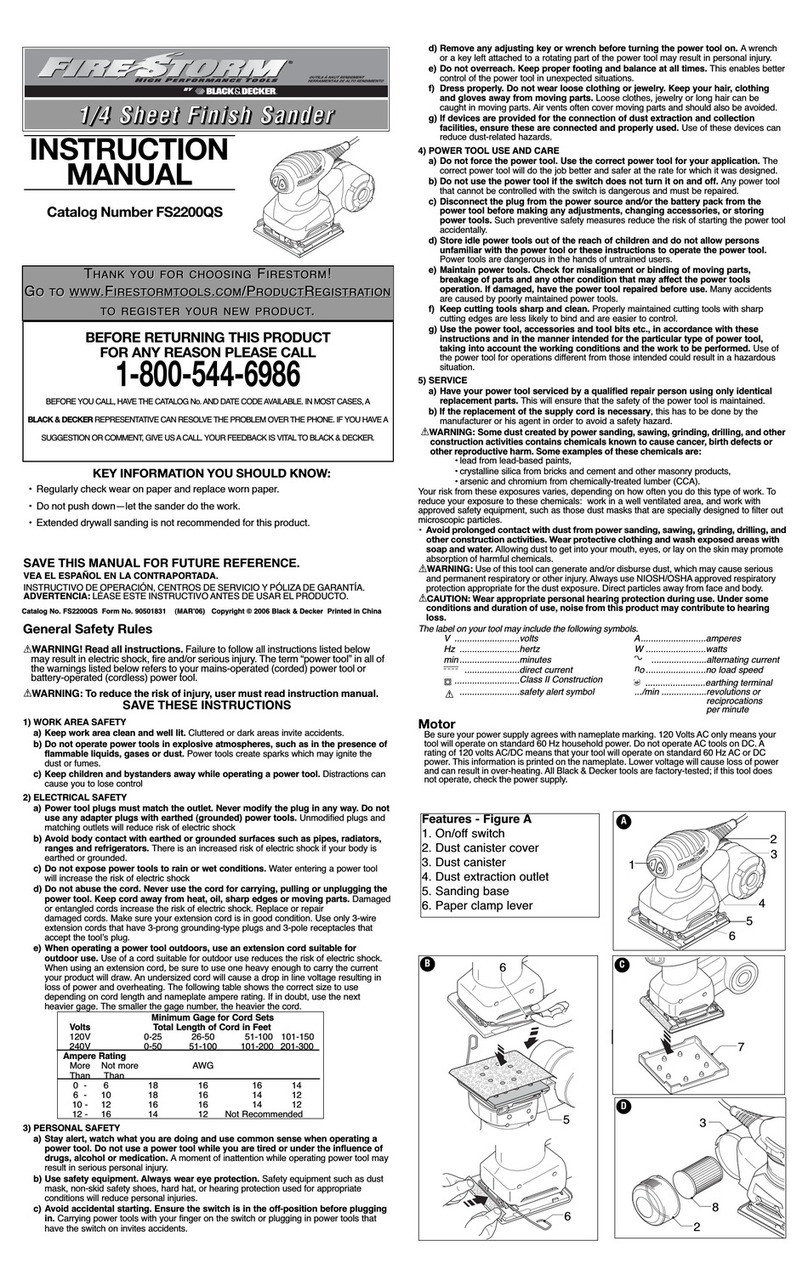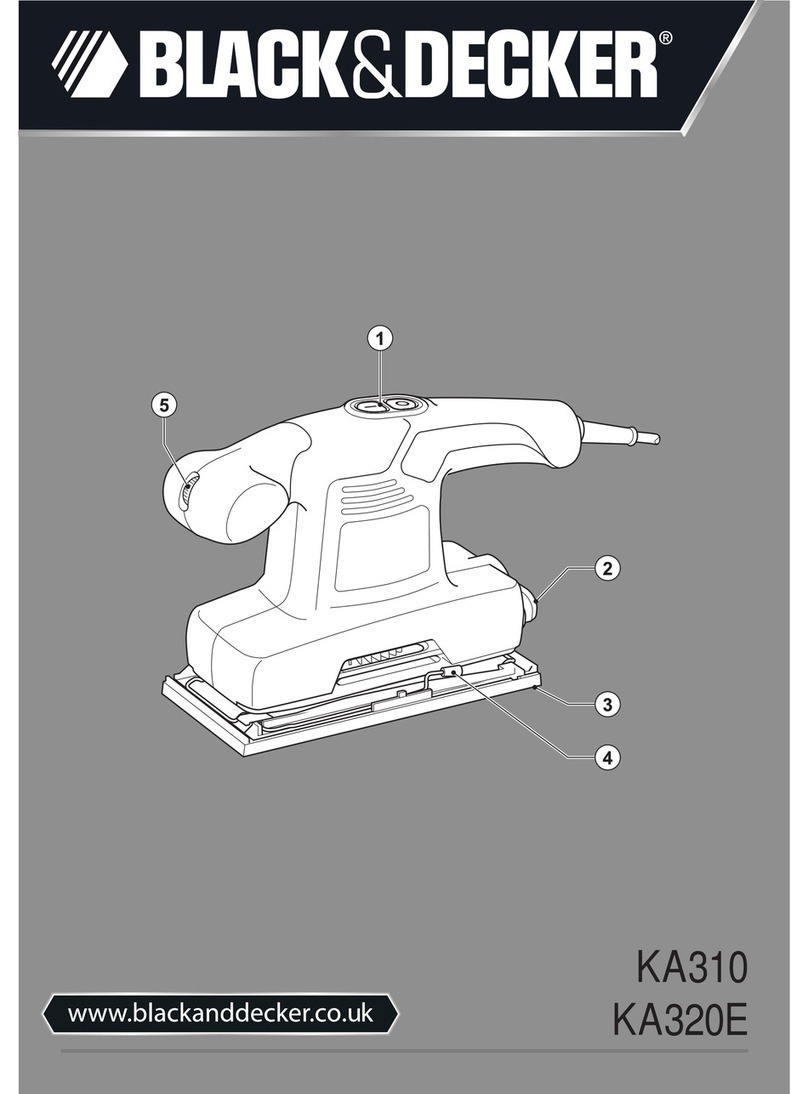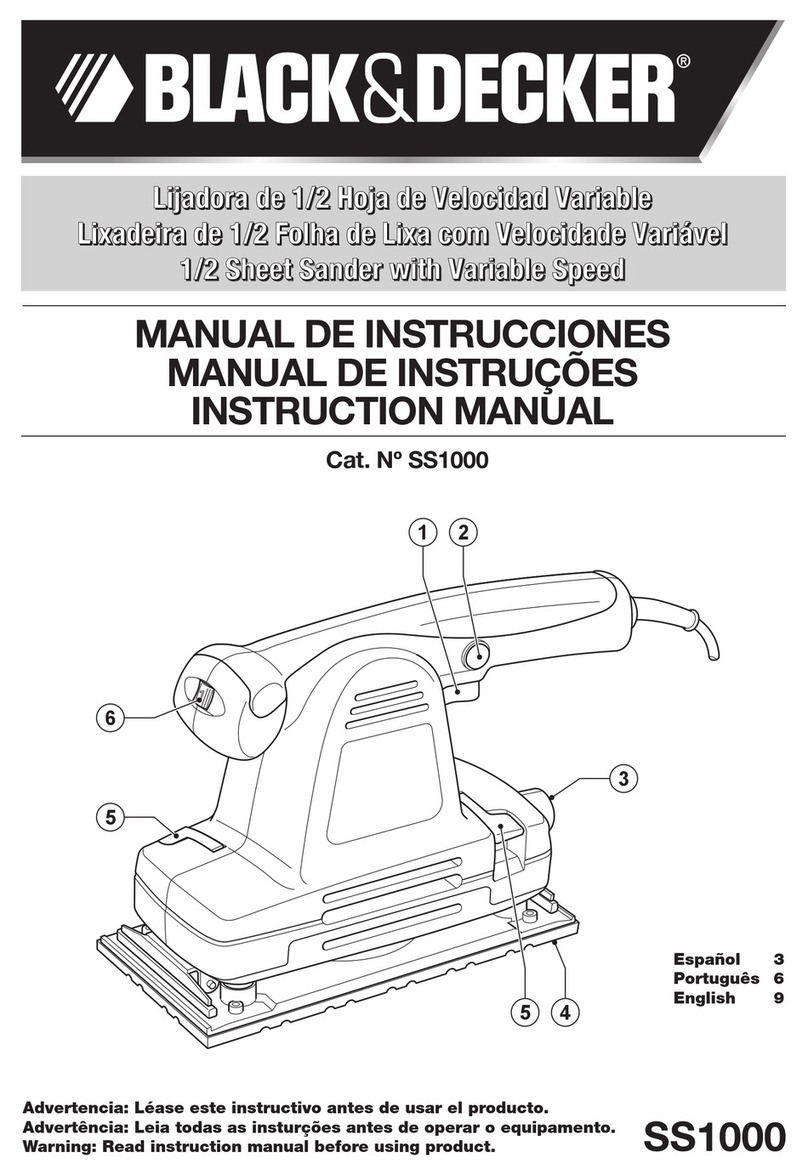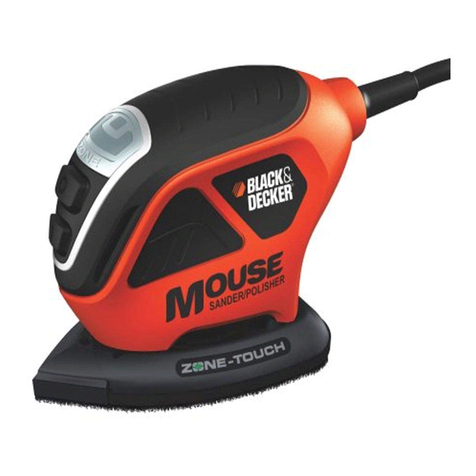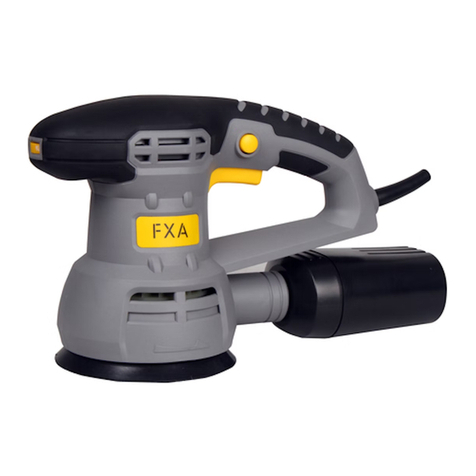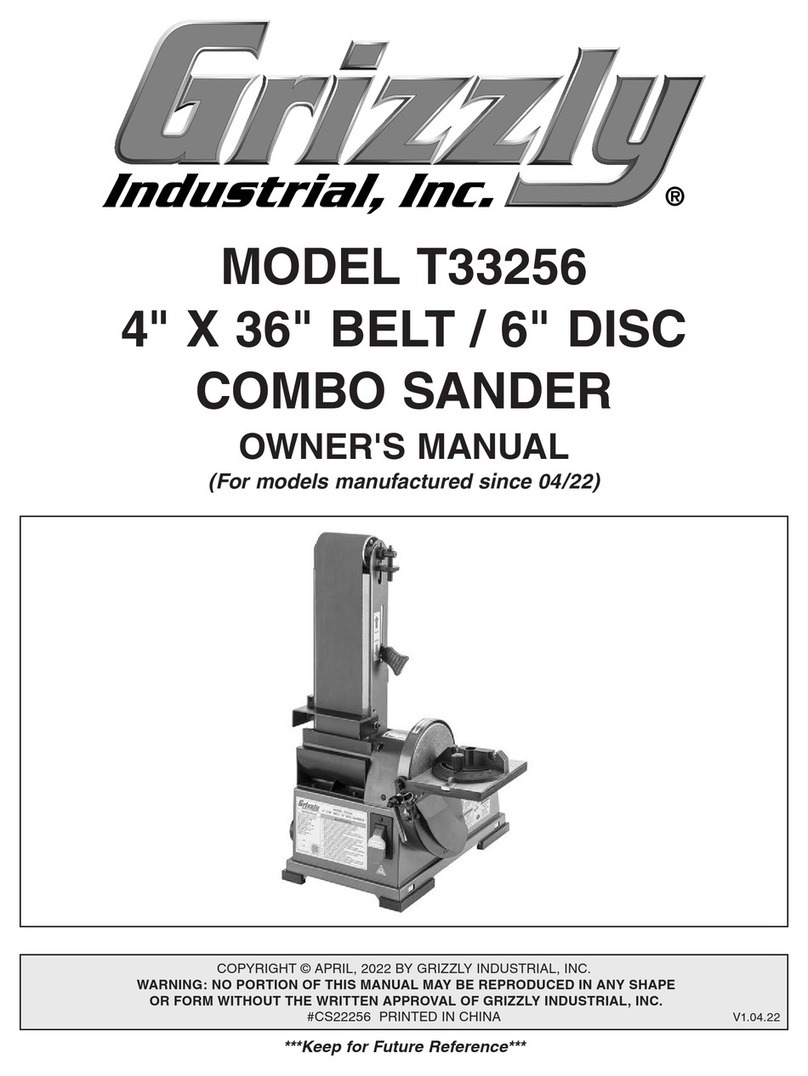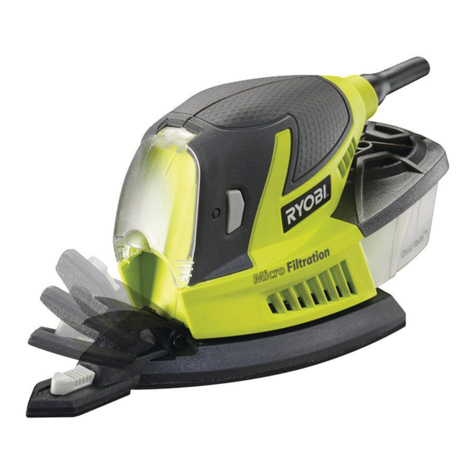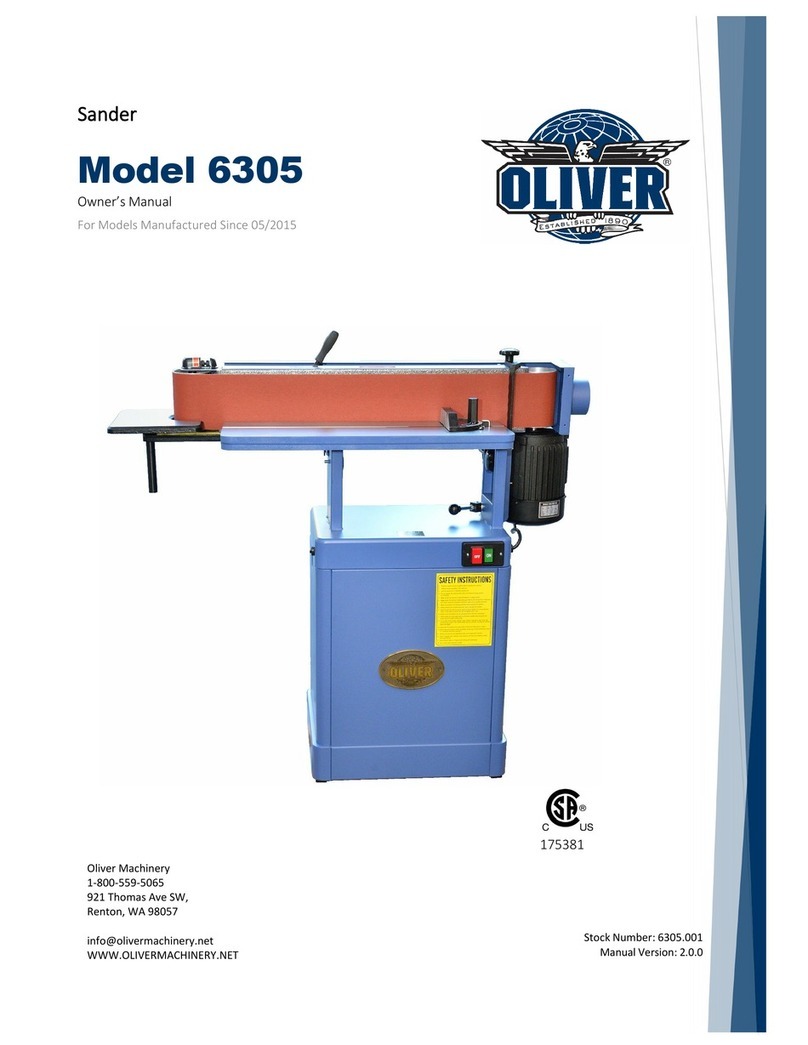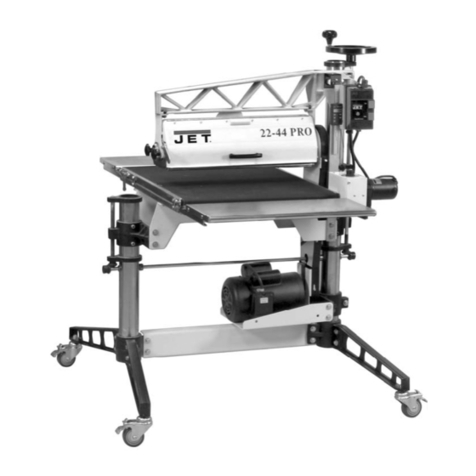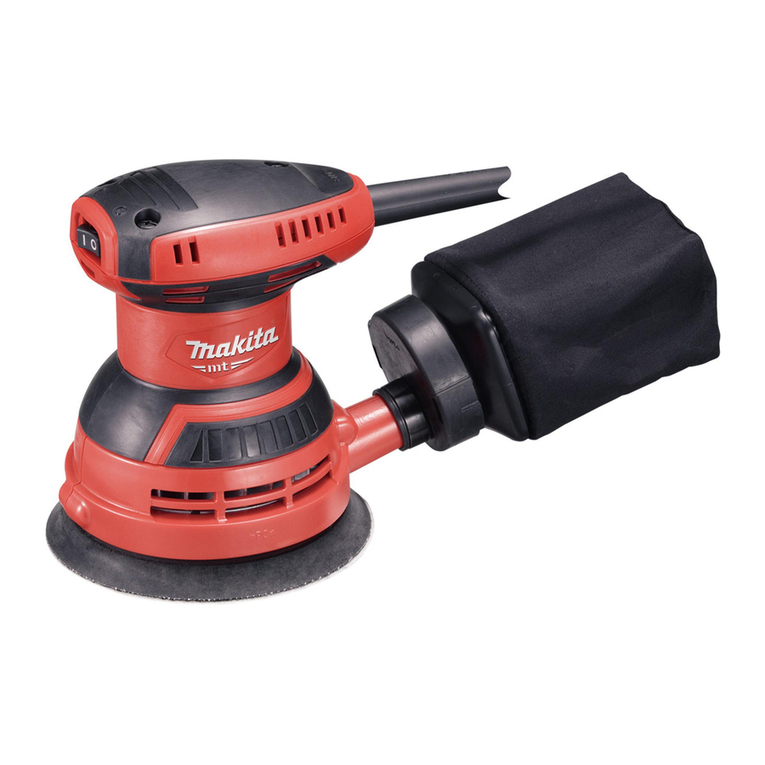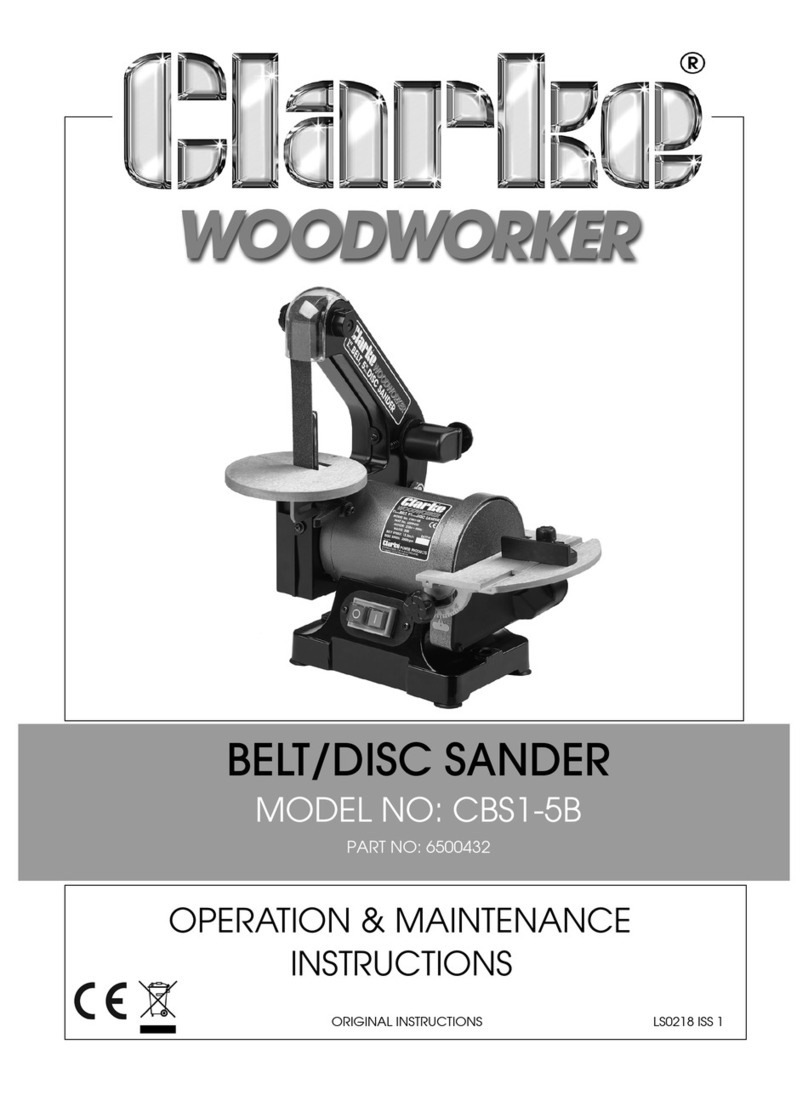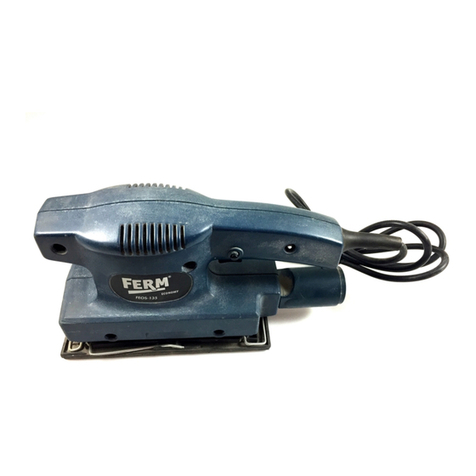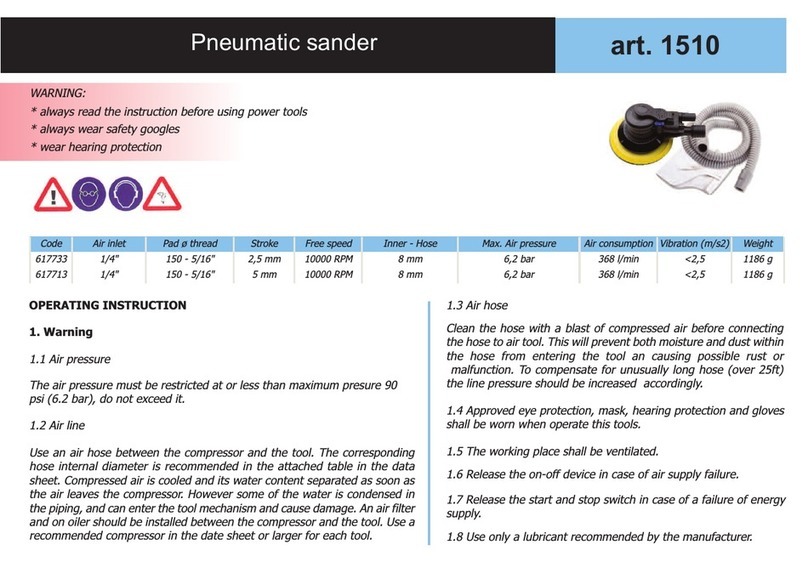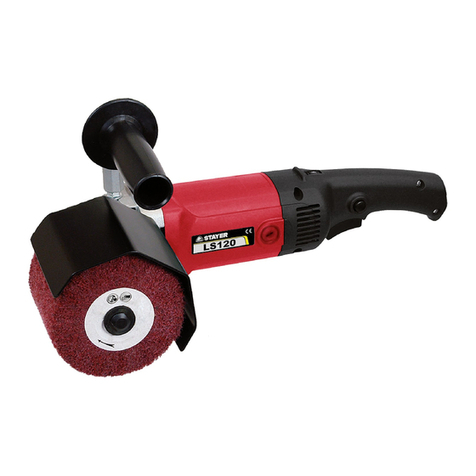
6
OR CARRY BATTERY SO THAT METAL OBJECTS
CAN CONTACT EXPOSED BATTERY TERMINALS.
FOR EXAMPLE, DO NOT PLACE BATTERY
IN APRONS, POCKETS, APPLIANCE BOXES,
PRODUCT KIT BOXES, DRAWERS, ETC.,
WITH LOOSE NAILS, SCREWS, KEYS, ETC.
TRANSPORTING BATTERIES CAN POSSIBLY
CAUSE FIRES IF THE BATTERY TERMINALS
INADVERTENTLY COME IN CONTACT WITH
CONDUCTIVE MATERIALS SUCH AS KEYS,
COINS, HAND APPLIANCES AND THE LIKE. THE
US DEPARTMENT OF TRANSPORTATION
HAZARDOUS MATERIAL REGULATIONS
(HMR) ACTUALLY PROHIBIT
TRANSPORTING BATTERIES IN
COMMERCE OR ON AIRPLANES (I.E.,
PACKED IN SUITCASES AND CARRY-ON
LUGGAGE) UNLESS THEY ARE PROPERLY
PROTECTED FROM SHORT CIRCUITS. SO
WHEN TRANSPORTING INDIVIDUAL
BATTERIES, MAKE SURE THAT THE
BATTERY TERMINALS ARE PROTECTED
AND WELL INSULATED FROM MATERIALS
THAT COULD CONTACT THEM AND
CAUSE A SHORT CIRCUIT. NOTE:
BATTERIES SHOULD NOT BE PUT IN
CHECKED BAGGAGE.
IMPORTANT CHARGING NOTES
1. Longest life and best performance can be obtained if
the battery pack is charged when the air temperature is
between 65°F and 75°F (18°- 24°C). DO NOT charge the
battery pack in an air temperature below +40°F (+4.5°C),
or above +105°F (+40.5°C). This is important and will
prevent serious damage to the battery pack.
2. The charger and battery pack may become warm to touch
while charging. This is a normal condition, and does not
indicate a problem. To facilitate the cooling of the battery
pack after use, avoid placing the charger or battery pack
in a warm environment such as in a metal shed, or an
uninsulated trailer.
3.
If the battery pack does not charge properly:
a. Check current at receptacle by plugging in a
lamp or other appliance.
b. Check to see if receptacle is connected to a light
switch which turns power off when you turn out the
lights.
c. Move charger and battery pack to a location
where the surrounding air
temperature is approximately 65°F - 75°F (18°-
24°C).
d. If charging problems persist, take the tool,
battery pack and charger to your local service
center.
4. The battery pack should be recharged when it
fails to produce sufficient power on jobs which were
easily done previously. DO NOT CONTINUE
to use under these conditions. Follow the
charging procedure. You may also charge
a partially used pack whenever you desire
with no adverse affect on the battery pack.
5. Foreign materials of a conductive
nature such as, but not limited to, steel
wool, aluminum foil, or any buildup of
metallic particles should be kept away
from charger cavities. Always unplug the
charger from the power supply when there
• NEVER force the battery pack into the
charger. DO NOT modify the battery
pack in any way to fit into a non-
compatible charger as battery pack
may rupture causing serious personal
injury. Consult the chart at the end of
this manual for compatibility of batteries
and chargers.
• Do not incinerate the battery pack
even if it is severely damaged or is
completely worn out. The battery pack
can explode in a fire. Toxic fumes and
materials are created when battery
packs are burned.
•
Do not charge or use battery in explosive
atmospheres, such as in the presence of
flammable liquids, gases or dust. Inserting
or removing the battery from the charger may
ignite the dust or fumes.
•
If battery contents come into contact with
the skin, immediately wash area with mild
soap and water. If battery liquid gets into
the eye, rinse water over the open eye for 15
minutes or until irritation ceases. If medical
attention is needed, the battery electrolyte
for Li-ion batteries is composed of a mixture
of liquid organic carbonates and lithium
salts.
• Contents of opened battery cells may
cause respiratory irritation. Provide
fresh air. If symptoms persist, seek
medical attention.
• Do not dispose of the battery in a fire. The
cell may explode. Check with local codes
for possible special disposal instructions.
• Do not open or mutilate the battery.
Released electrolyte is corrosive and
may cause damage to the eyes or skin. It
may be toxic if swallowed.
WARNING: BURN HAZARD.
BATTERY LIQUID MAY BE FLAMMABLE IF
EXPOSED TO SPARK OR FLAME.
• Charge the battery packs only in
BLACK+DECKER chargers.
• DO NOT splash or immerse in water or
other liquids. This may cause premature
cell failure.
• Do not store or use the appliance and
battery pack in locations where the
temperature may reach or exceed
105°F (40˚C) (such as outside sheds or
metal buildings in summer).
WARNING: NEVER ATTEMPT TO OPEN THE
BATTERY PACK FOR ANY REASON. IF BATTERY
PACK CASE IS CRACKED OR DAMAGED, DO NOT
INSERT INTO CHARGER. DO NOT CRUSH, DROP
OR DAMAGE BATTERY PACK. DO NOT USE A
BATTERY PACK OR CHARGER THAT HAS RECEIVED
A SHARP BLOW, BEEN DROPPED, RUN OVER OR
DAMAGED IN ANY WAY (I.E., PIERCED WITH A
NAIL, HIT WITH A HAMMER, STEPPED ON).
DAMAGED BATTERY PACKS SHOULD BE
RETURNED TO SERVICE CENTER FOR RECYCLING.
WARNING:
FIRE HAZARD. DO NOT STORE
